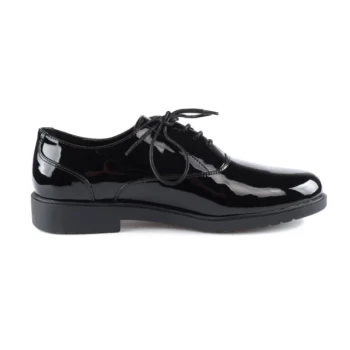Waterproofing technology in hiking shoes relies on a combination of specialized materials and design features to keep feet dry while balancing breathability. The core component is a waterproof membrane, typically made of expanded polytetrafluoroethylene (ePTFE) like Gore-Tex, which blocks external moisture while allowing some sweat vapor to escape. This membrane is integrated into a sock-like bootie construction within the shoe's upper, often supplemented by water-resistant outer materials and durable water repellent (DWR) coatings. However, this protection comes with trade-offs in breathability and temperature regulation, making waterproof shoes better suited for wet/cold conditions than hot/dry climates. Proper maintenance is crucial to preserve the waterproofing properties over time.
Key Points Explained:
-
Waterproof Membrane Technology
- The primary barrier is a microporous membrane (usually ePTFE) with pores smaller than water droplets but larger than vapor molecules. This allows sweat to escape while blocking external moisture.
- Example: Gore-Tex membranes use ~9 billion pores per square inch for this selective filtration.
- These membranes are laminated between the shoe's outer material and inner lining, creating a "bootie" construction that seals out water at seams.
-
Supplemental Waterproofing Features
- DWR Coatings: Applied to outer fabrics to make water bead up and roll off rather than soak in.
- Sealed Seams: Critical areas are taped or welded to prevent water ingress at stitching points.
- Gusseted Tongues: Prevent water from entering through the lacing system.
-
Breathability Trade-Offs
- Waterproof membranes inherently reduce airflow compared to mesh hiking shoes.
- While modern membranes allow ~85% of sweat vapor to escape, this is still less ventilation than non-waterproof designs.
- In temperatures above 60°F (15°C), waterproof shoes can cause 20-30% more foot sweat according to biomechanical studies.
-
Durability Factors
- Abrasion from trail debris can degrade membranes over time - average lifespan is 500-1,000 miles of use.
- DWR coatings typically require reapplication every 6-12 months depending on use.
- Salt residues from sweat accelerate breakdown of waterproof layers.
-
Performance Limitations
- No shoe is truly 100% waterproof - submersion beyond the collar will allow water entry.
- In heavy rain, water can wick through saturated laces or tongue materials.
- Wet conditions actually improve membrane breathability (up to 35% more vapor transmission) as humidity differential increases.
-
Material Considerations
- Leather uppers provide natural water resistance but require regular conditioning.
- Synthetic materials (e.g., nylon) are lighter and dry faster but less durable.
- Membrane thickness varies - 2-layer constructions are more breathable but less durable than 3-layer designs.
For purchasers, the decision should weigh expected weather conditions against breathability needs. Waterproof hiking shoes excel in consistent wet environments but may cause discomfort in dry heat. Proper sizing (allowing for thicker socks) and break-in periods are crucial for optimal performance.
Summary Table:
| Feature | How It Works | Key Considerations |
|---|---|---|
| Waterproof Membrane | Microporous ePTFE blocks water but allows vapor escape | Requires intact bootie construction; degrades with abrasion |
| DWR Coatings | Causes water to bead on outer fabric | Needs reapplication every 6-12 months |
| Sealed Seams | Prevents water ingress at stitch points | Critical in high-wear areas like toe boxes |
| Breathability | Allows ~85% vapor transmission | Reduced in hot/dry conditions (>60°F/15°C) |
| Material Choices | Leather = durable; Synthetics = lightweight | Affects maintenance requirements and dry times |
Ready to conquer wet trails with confidence? As China's leading footwear manufacturer with 70+ years of expertise, 3515 produces premium waterproof hiking shoes that combine advanced membrane technology with rugged durability. Our OEM/ODM services help distributors and outdoor brands deliver:
- Optimized waterproofing systems with reinforced high-wear zones
- Breathable performance through precision membrane lamination
- Customizable designs for specific terrain and climate needs
Get a quote for your waterproof hiking shoe project today and let our engineering team develop the perfect balance of protection and comfort for your customers.
Related Products
- Customizable Slip-On Safety Shoes Direct from the Factory for Wholesale
- Athletic Safety Shoes with Dial Closure & Steel Toe for Wholesale & Custom Manufacturing
- Durable Canvas Work Shoes with Rubber Lug Sole | Wholesale Manufacturer
- Puncture-Resistant Velcro Safety Boots for Wholesale & Custom Manufacturing
- Safety Footwear Wholesale Manufacturer for Custom OEM/ODM Production
People Also Ask
- How often should work boots be replaced? Key Signs & Replacement Guide
- How should women's work boots be cared for and maintained? Essential Tips for Longevity
- Why is traction important in work boots, and what sole features enhance it?
- How does wearing the right shoes benefit overall health? Boost Mobility and Prevent Chronic Pain
- How can new work boots be broken in? Tips for Comfort & Durability



















